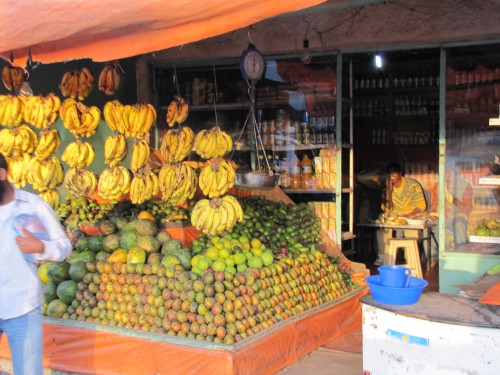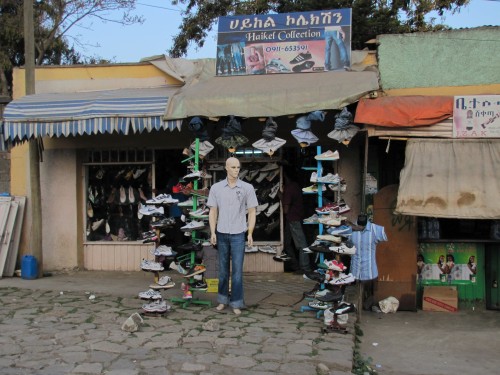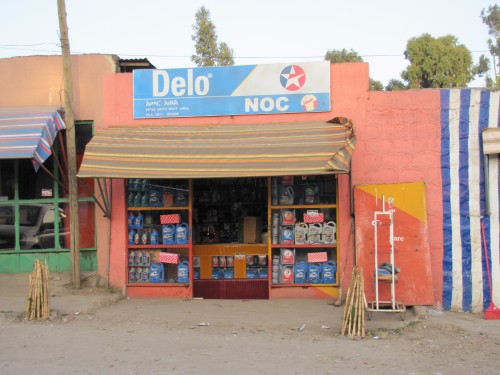Animal markets in Addis Ababa
On our last evening during our stay in Addis Ababa late last year my wife and I went for a stroll through the local streets and marketplaces. It was interesting to see a way of life in complete contrast with what we are used to here in Australia. Of particular interest were the many animals for sale in the main street of the suburb where we were staying while visiting out daughter. The animals – cattle, goats and sheep – were very docile and despite not being yarded in any way were not at all spooked by the noisy car, truck and bus traffic a metre or so away, nor did the many pedestrians upset them either.
I must have looked like a very rich person because I was offered many animals as we walked along. I was not sure what the going price for a nice lamb would have been, so I politely declined to buy any. Besides, we were scheduled to fly out a few hours later; I didn’t want to try explaining a live goat or lamb under my arm as carry-on luggage.
Shopping in Addis Ababa
Like many African and Asian cities, Addis Ababa in Ethiopia is an intriguing place to go shopping. While we didn’t do all that much shopping while visiting our daughter, we saw enough to be fascinated by the differences between Africa and Australia, but also interested in the similarities.
In today’s post I am featuring three kinds of shops: a fruit shop, a clothing shop and a shop selling just car oil (though it might have also been selling car parts; I didn’t go inside).
Like in Australia, shop keepers often spill their wares out onto the footpath (though the footpath shown above is quite a rarity, being actually a reasonably smooth surface).
Cottage industries in Addis Ababa
On the final evening of our stay in Addis Ababa we went for walk in a nearby street. This was a typical suburban street with active markets on the footpaths and many shops open with their wares spilling out onto the footpath.
I actually use the term “footpath” loosely; there was no real path, or smooth walking surface. I am referring only to the space between the shop frontages and the road. Because these “footpaths” were often rocky, uneven, rutted, muddy and unsuitable for easy walking, so most people walked on the road. The constant hooting of car and truck horns resulted from waves of pedestrians clogging up the road’s surface.
One of businesses which intrigued my wife is shown in the above photo. It shows a man sewing on an old treadle sewing machine. On an earlier trip in Nepal I saw this activity in many places.
Another cottage industry we saw in a number of areas of Addis Ababa was furniture making, shown in the photo below.










